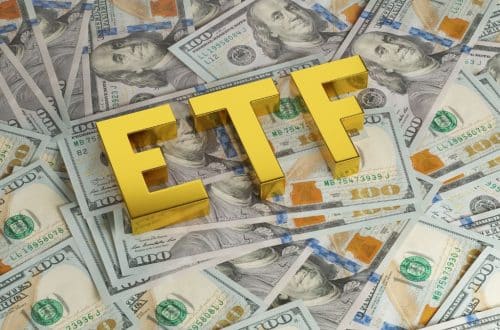
Ofiary ataków ransomware odmawiające zapłaty: analiza łańcuchowa
- Chainalysis wykazało, że osoby atakujące ransomware wyłudziły od ofiar co najmniej $456,8 mln w 2022 r., w porównaniu z $765,6 mln w 2021 r.
- „Spadek wynika w dużej mierze z tego, że organizacje ofiar coraz częściej odmawiają płacenia atakującym ransomware” – powiedziała firma blockchain.
- Większość funduszy uzyskanych z ataków została wysłana do głównych scentralizowanych giełd, ponieważ wykorzystanie DEX-ów gwałtownie spadło.
- Długość życia szczepu również spadła, przy czym średni szczep pozostawał aktywny przez 70 dni w 2022 r., z 153 w 2021 r. i 265 w 2020 r.
Rok 2022 był jednym z najbardziej aktywnych lat dla hakerów i oszustów w branży kryptograficznej, w tym atakujących ransomware. Ci napastnicy używają oprogramowania, które w rzeczywistości jest złośliwym oprogramowaniem z kryptowirusologii, które całkowicie odcina użytkownikowi dostęp do jego danych osobowych lub grozi ujawnieniem tych danych publicznie, jeśli okup nie zostanie zapłacony. Co ciekawe, przychody takich hakerów nadal spadają, ponieważ ofiary zaczęły odmawiać im zapłaty.
Według nowego post na blogu z firmy Chainalysis zajmującej się danymi blockchain, „Atakujący ransomware wyłudzili od ofiar co najmniej $456,8 mln w 2022 r., w porównaniu z $765,6 mln rok wcześniej”. Ta pozytywna zmiana trendu potwierdza fakt, że ofiary nie boją się już takich napastników po tym, jak organy regulacyjne stały się coraz bardziej aktywne w branży kryptograficznej, rozprawiając się ze wszystkimi programistami, którzy wykorzystują ich umiejętności do złych celów.
Chainalysis stwierdziła również, że znalezione wartości nie są prawdziwe i że nadal istnieją adresy atakujących ransomware, które nie zostały jeszcze zidentyfikowane. Jednak firma zajmująca się danymi blockchain zauważyła, że pieniądze uzyskane z takich ataków znacznie spadły. Zgodnie z przekonaniem firmy, „spadek wynika w dużej mierze z tego, że organizacje ofiar coraz częściej odmawiają płacenia atakującym ransomware”.
Z drugiej strony Chainalysis odnotowała znaczny wzrost liczby szczepów oprogramowania ransomware w 2022 r., a także zacytowała raport firmy Fortinet zajmującej się cyberbezpieczeństwem, według której w pierwszej połowie 2022 r. aktywnych było ponad 10 000 szczepów oprogramowania ransomware. powiedział, że „dane on-chain potwierdzają, że liczba aktywnych szczepów znacznie wzrosła w ostatnich latach, ale zdecydowana większość przychodów z oprogramowania ransomware trafia w dowolnym momencie do niewielkiej grupy szczepów”.
Co więcej, żywotność oprogramowania ransomware również nadal spadała w 2022 r., a średni szczep pozostawał aktywny przez ponad 70 dni, co oznacza spadek o ponad 50% w porównaniu ze 153 dniami w 2021 r. i 265 dniami w 2020 r. Co ciekawe, firma blockchain potwierdziła również, że fundusze dokonane za pośrednictwem tych działań są w większości przenoszone do głównych scentralizowanych giełd kryptograficznych.
„Udział środków ransomware trafiających na główne giełdy wzrósł z 39,31 tys. TP3 w 2021 r. do 48,31 tys. Zmniejszyło się również wykorzystanie nielegalnych usług, takich jak rynki Darknet do prania brudnych pieniędzy za pomocą oprogramowania ransomware, podczas gdy wykorzystanie miksera wzrosło z 11,61 TP3T do 15,01 TP3T”, powiedział Chainalysis.
Chainalysis stwierdziła również, że przez większość czasu te złośliwe oprogramowanie działa w modelu ransomware jako usługa (RaaS), tj. programista umożliwia atakującym korzystanie z ich oprogramowania za niewielką część przychodów. Dodatkowo, jak donosił wcześniej Bitnation, amerykańska międzynarodowa korporacja technologiczna Microsoft wykrył atak o nazwie DEV-013 który jest konkretnie skierowany do start-upów kryptograficznych.







